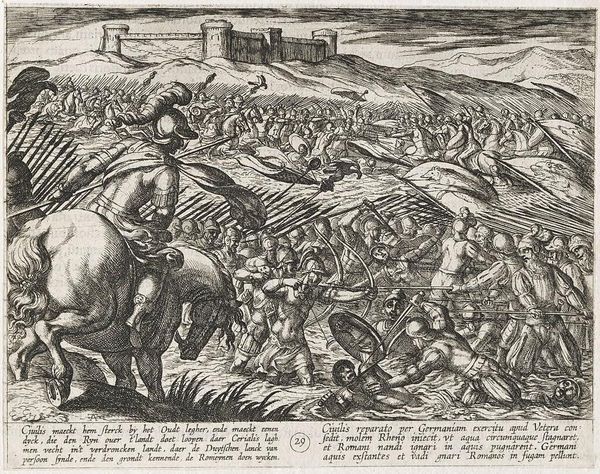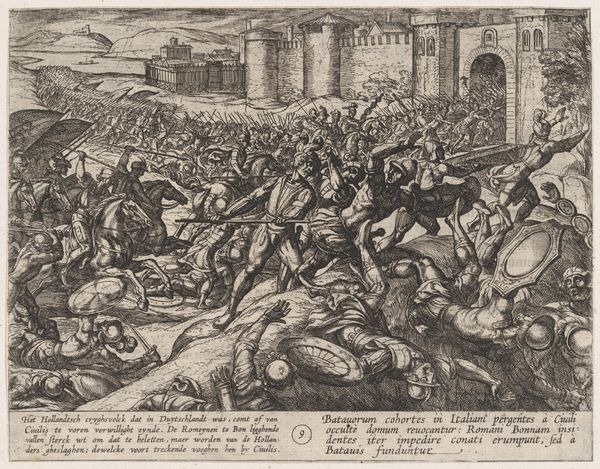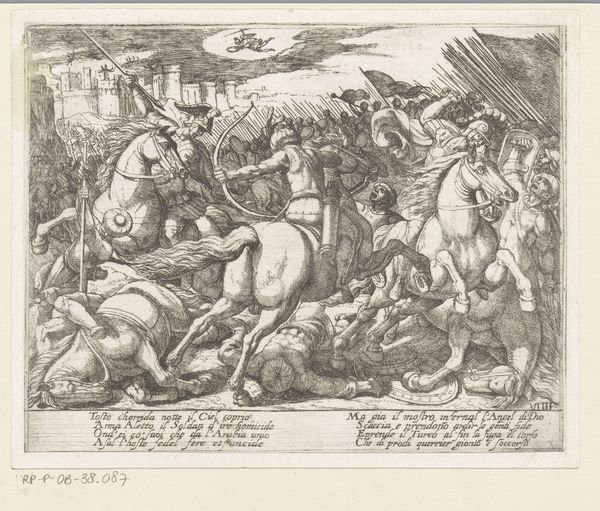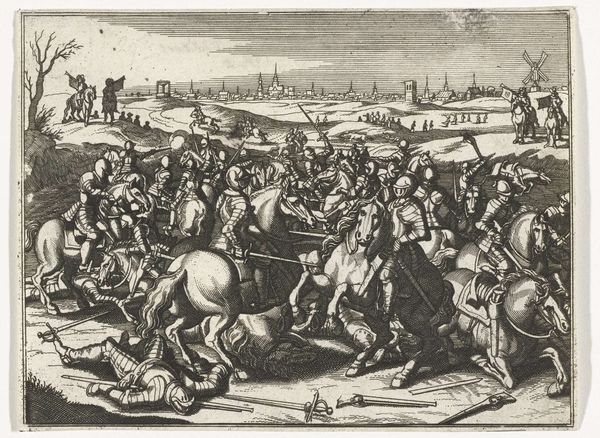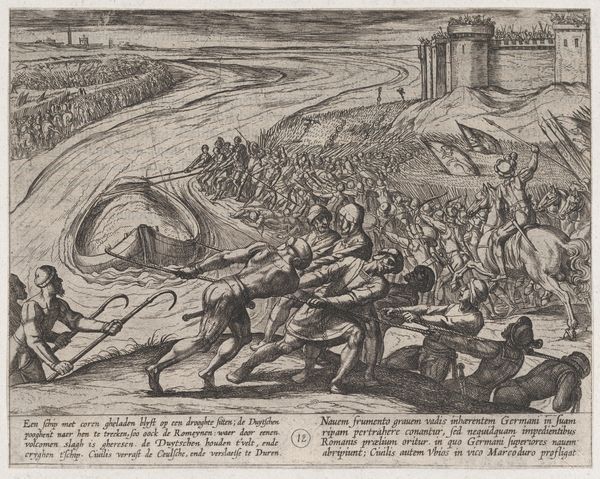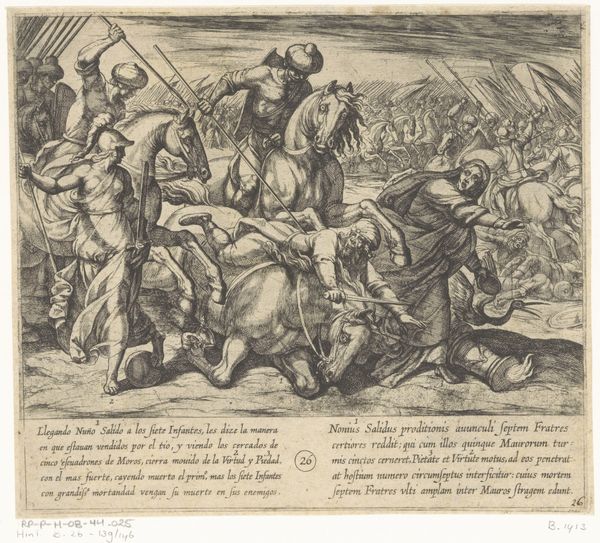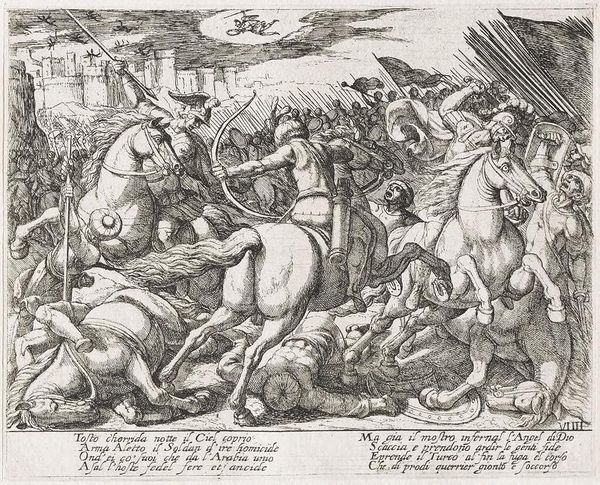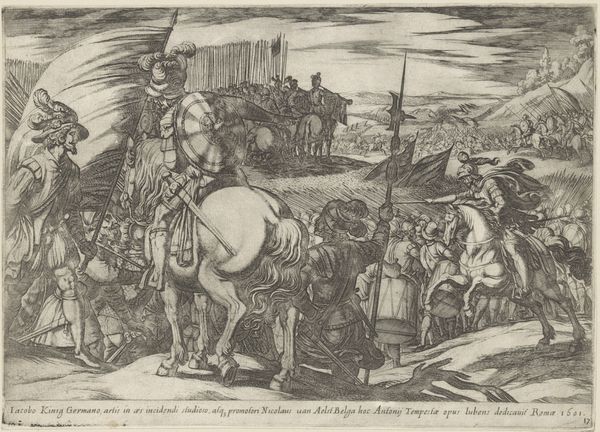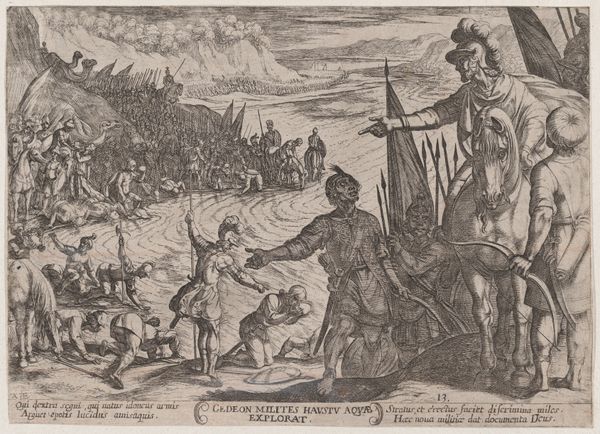
Plate 29: Civilis Floods the Land by Defensively Breaking the Dikes, from The War of the Romans Against the Batavians (Romanorvm et Batavorvm societas) 1611 - 1612
0:00
0:00
drawing, print, etching, engraving
#
drawing
# print
#
etching
#
landscape
#
history-painting
#
engraving
#
building
Dimensions: Sheet: 6 5/16 × 8 1/16 in. (16 × 20.5 cm)
Copyright: Public Domain
Curator: Here we have "Plate 29: Civilis Floods the Land by Defensively Breaking the Dikes," part of Antonio Tempesta's "The War of the Romans Against the Batavians" series, created around 1611-1612. This print, rendered through etching and engraving, depicts a dramatic scene of rebellion. Editor: It's striking how Tempesta uses dense lines to convey the chaos of battle. The way the water is depicted gives it a thick, almost viscous quality. It really emphasizes the struggle and the difficult material conditions. Curator: Indeed. This print illustrates a pivotal moment: the Batavian revolt against Roman rule. Civilis, the Batavian leader, strategically floods the land to undermine the Roman army. It's a fascinating example of ecological warfare and highlights the vulnerabilities of empire. Editor: It makes me consider the practical skills involved in etching and engraving in that era. The precision and labor needed to carve these incredibly detailed lines is astonishing. Think about the embodied knowledge required to depict a landscape in such a compelling way. Curator: Precisely. And this wasn't just documentation; it's propaganda. These images were widely circulated, shaping public opinion and constructing a narrative of Batavian heroism. The print served a purpose beyond mere aesthetics, influencing how people viewed this historical event. Editor: You’re right. Consider how the artist portrays the water. It’s a weapon, a material manipulated for political ends. That challenges a romanticized view of landscapes, forcing us to think about how environments are tools in social and political conflicts. Curator: Tempesta, by distributing images of warfare to a broad audience, was playing a key role in early modern public perception of power, both on the part of the Romans and their perceived enemies. Editor: Absolutely. The etching reminds us that history isn't just a matter of dates and figures. It's also about the materials people used and the physical spaces they inhabited—a very tangible struggle, indeed. Curator: Reflecting on the history and symbolism, it is fascinating how art serves as both mirror and manipulator of cultural sentiments. Editor: And thinking materially, this artwork allows us to meditate on land, water, and printed matter as participants in history's grand narratives.
Comments
No comments
Be the first to comment and join the conversation on the ultimate creative platform.
